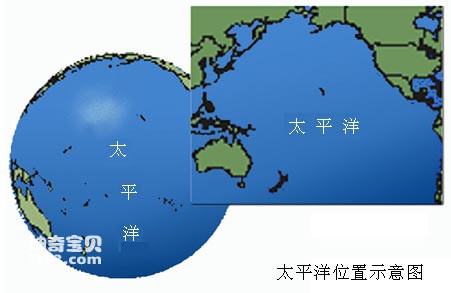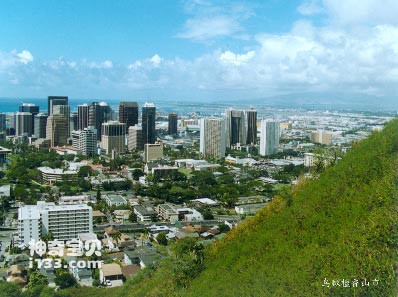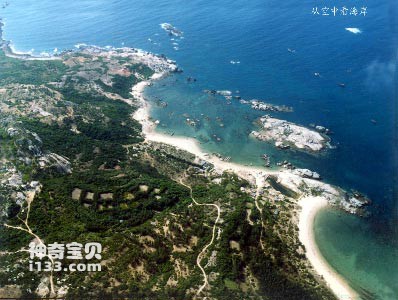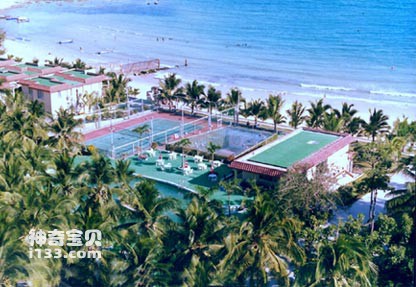The Pacific Ocean is between Asia, Oceania, Antarctica and the Americas. It is the largest of the world's oceans. It is about 19,000 kilometers wide from east to west and about 16,000 kilometers long from north to south. It covers an area of 180 million square kilometers, accounting for 35% of the global area. 50% of the world's total ocean area exceeds the total land area of the world. The average depth of the Pacific Ocean is 3,957 meters, and the deepest point in the Mariana Trench reaches 11,034 meters. At the end of November 1520, the Portuguese navigator Magellan led a fleet from the Atlantic Ocean around South America and entered the Strait of Magellan. There were strong winds and huge waves along the way, and after more than 30 days of maze-like sailing, we entered a new ocean. For more than 110 days along the way, the weather was always calm and sunny. Magellan was very happy and thought this ocean was "peaceful", so he named it the Pacific Ocean. In fact, the Pacific Ocean is the area with the most frequent volcanoes and earthquakes on the earth. At 40 degrees south latitude, westerly winds rage all year round, with strong winds and tight waves. It is called the "roaring westerly belt." It can be seen that the Pacific Ocean is not peaceful.

Map of the Pacific Ocean
The northern end of the Pacific Ocean is connected to the Arctic Ocean by the Bering Strait. To the southwest, it is connected to the Indian Ocean through the Strait of Malacca; it is separated from the Indian Ocean by islands such as Sumatra, Java, New Guinea and Australia.

Honolulu, Hawaiian Islands, United States
The Pacific Ocean is the warmest ocean in the world. The average sea surface water temperature is 19 degrees. The world's average ocean temperature is 17.5 degrees. The water temperature in the Pacific Ocean is 2 degrees higher than that in the Atlantic Ocean, mainly because the Bering Strait is very narrow. It hinders the inflow of cold water from the Arctic Ocean; the tropical Pacific Ocean has a wide surface and stores a large amount of heat. Therefore, there are many typhoons generated in the Pacific Ocean, accounting for about 70% of the world's total typhoons. Typhoons are generated in tropical seas. It carries a lot of energy and spins forward. Wherever it goes, there will be strong winds and heavy rain, releasing a large amount of water vapor and heat it carries.
The Pacific Ocean is rich in resources, including salmon, anchovies, herring, tuna, seals, whales and krill. The coasts of Peru, the United States, Canada, Japan's Hokkaido, and my country's Zhoushan Islands are all world-famous fishing grounds, accounting for half of the world's output. Undersea oil is mainly found in California, western Japan, Australia, Southeast Asia, and the continental shelf of China. A large number of manganese nodules have been found in the deep ocean basin of the Pacific Ocean, with reserves ranking first among all oceans, about 1.7 trillion tons, mainly in the southeastern waters of Hawaii. The United States, Japan, Germany, France and China obtained a piece of mining rights through investigation and exploration with the approval of the United Nations.

Australia's Great Barrier Reef
On the surface of the Pacific Ocean, there is another clockwise circulation. It is composed of the equatorial current, the Kuroshio Current, the westerly drift and the California Cold Current. Among them, the black and moist warm current, the second largest in the world, enters the East China Sea from the east side of Taiwan, my country, and then goes northward and flows northeastward. The Kuroshio has a great influence on the cold and warm weather, droughts and floods of our country's climate. It has always been valued by Chinese oceanographers and meteorologists.
There are many islands in the Pacific, with a total of about 10,000, and nearly 3,000 larger islands. The largest island is New Guinea, ranking second in the world after Greenland. The islands in the west are mostly mainland islands, such as the Japanese archipelago, Kalimantan and New Guinea; the islands in the central and southern Pacific are mostly volcanic islands and coral islands. The world-famous Great Barrier Reef, on the northeastern coast of Australia, stretches for more than 2,000 kilometers and is more than 200 kilometers wide, including more than 500 coral islands. The island has dense tropical forests, clear sea water, fish and shrimps swimming around, and winding and secluded waterways. It is a tourist wonder. The Hawaiian Islands in the middle of the ocean have beautiful scenery and clean beaches.

Hainan seaside
There are many deep trenches around the Pacific Rim. Among the world's oceans, there are 20 trenches with a depth of more than 6,000 meters in the Pacific Ocean. The famous ones are the Mariana Trench, Palau Trench, Philippine Trench, Kurile Trench, Peru-Chile Trench, Kermadec Trench, and Izu-Ogasawara Trench. , Tonga Trench, Aleutian Trench, New Hebrides Trench, etc. Interestingly, trenches and island arcs in the western Pacific appear in pairs. Along the Pacific island arc and trench zone, an arc-shaped seismic zone is formed. More than 80% of the world's volcanoes and earthquakes are distributed around the Pacific Ocean.
animal tags:
We created this article in conjunction with AI technology, then made sure it was fact-checked and edited by a Animals Top editor.